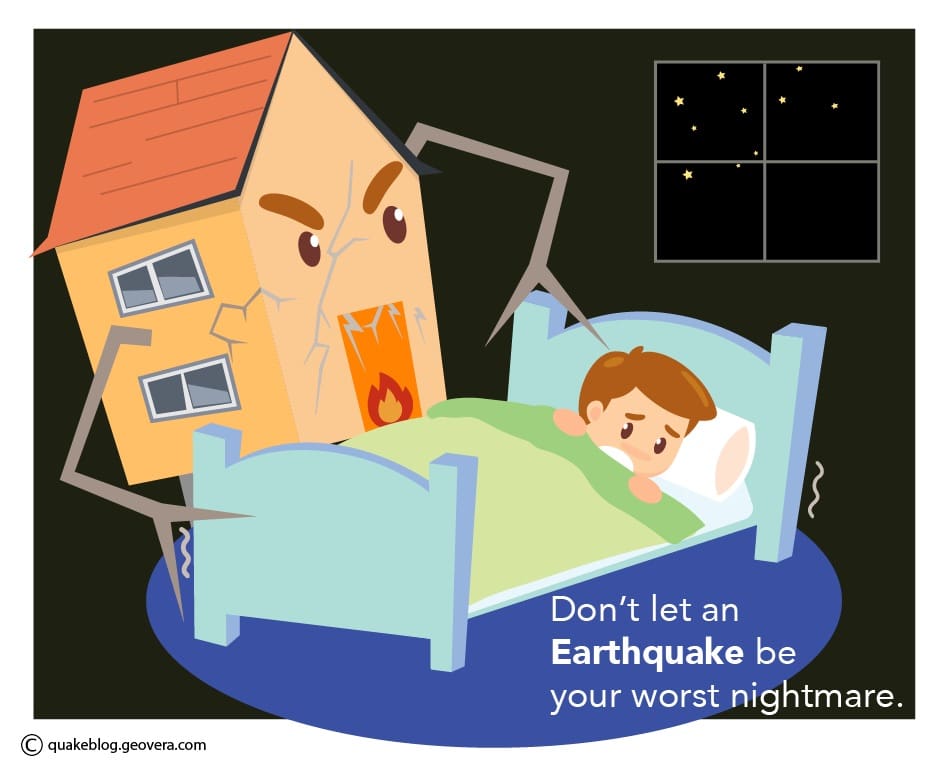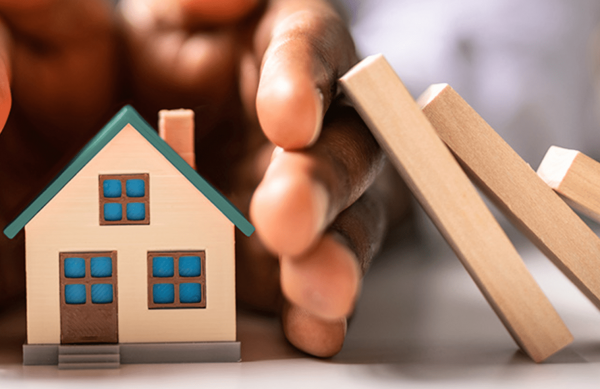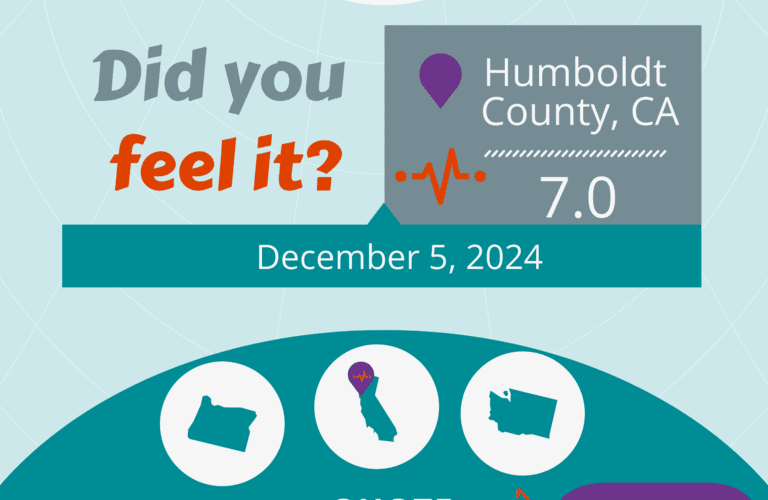Ready for an earthquake safety quiz?
Imagine that you’re at home. You’ve just climbed into bed, and you’re somewhere between sleep and awake. In the darkness, your thoughts drift through things you need to do in the morning and wondering if you locked the door and turned off the kitchen light.
Suddenly, you’re jolted awake. The whole house feels as if it has come alive as it shakes violently. You climb out of bed and roll to the floor. You barely catch yourself as your hands search the dark for something to hold yourself steady.
The sound of dishes breaking in the kitchen and furniture tipping is drowned by the boom of the neighbor’s tree crashing onto the cars parked outside. “Earthquake,” is all you can pick out of the scrambled thoughts bouncing through your mind. You clutch your head in terror as you feel something like a lamp hit you squarely between the shoulders.
What do you do?
If your answer is, “Stand in a door frame,” you are wrong Opens a new window. The good news is that this scenario isn’t real, and you still have time to learn how to react. While earthquakes are unpredictable, the likelihood that you will be at home during a quake is significant. Knowing how to respond quickly to the chaos can make a huge difference for your family’s safety.

4 earthquake safety practices to keep in mind during an earthquake:
- Drop and Cover.
If you are not already on your hands and knees, drop to the ground so that the earthquake doesn’t knock you down. Once you have gotten to the floor, cover your head and neck with your arms to protect yourself from any falling objects or debris. If you are able to move safely and there is the danger of falling objects, crawl to an area that has additional coverage, such as under a sturdy table or a desk. Don’t have anything that can provide coverage? Stand or crouch against an interior wall.
2. Hold On.
Once you’ve dropped and covered, hold onto your coverage. Holding onto your sturdy cover will ensure that it will move with you. Stay in your safe location until the shaking stops.
3. If you won’t be able to safely get to the floor to take cover…
Those who use mobility devices should lock the wheels on their device, bend over as much as possible, and remain seated during the earthquake. Protect your head and neck by any means necessary. A book or a pillow are two everyday household items that can provide head and neck protection. The best earthquake safety practice is to check the home for any hazards Opens a new window that could be dangerous for those with limited mobility.
4. If you are in bed when the shaking starts…
Stay in bed and use a pillow to cover your head and neck. As in our example, an earthquake can happen at any time—even when you are dozing off into dreams on an ordinary day. The darkness will become one of your greatest hazards, as debris and dangers will be difficult to see and even more difficult to avoid. It is much safer to stay in bed rather than try to move around in the dark looking for a safe location.
Earthquake safety tips to avoid common Shake Mistakes at home:
- Do not run outside during an earthquake. Stay where you are.
- Do not get in a doorway for protection during a quake. This does not provide protection from projectile objects, and it is unlikely you will be able to remain standing.
- Prepare yourself for aftershocks once the shaking stops. If you can, listen to the radio for important information and instructions.
- Stay away from exterior walls, glass, heavy furniture, fireplaces, stairs, appliances, and windows.
- Avoid taking cover in the kitchen during and after an earthquake if possible. Your kitchen is a dangerous place in your home.
- Once the shaking stops, check your surroundings. If you are able to exit your home safely, exit your home and get to an open space away from damaged areas.
- Do not exit your home until the shaking stops and only if it is safe to do so.
Safety begins with earthquake preparation. Knowing what to do during an earthquake—when your whole home becomes one big hazard—is unquestionably a vital part of earthquake preparation. These earthquake safety tips will make a big difference for you when every second is crucial.
Have you thought about what to do during an earthquake while you’re at work? Don’t worry, we’ve got some tips coming soon to help you through the workday.
QuakeInsurance by GeoVera provides innovative insurance solutions in catastrophe-exposed areas and is the leading provider of residential earthquake insurance. QuakeInsurance uses a strategic and agile approach to developing insurance products that are both impactful and reliable. Get a quote today! Opens a new window



